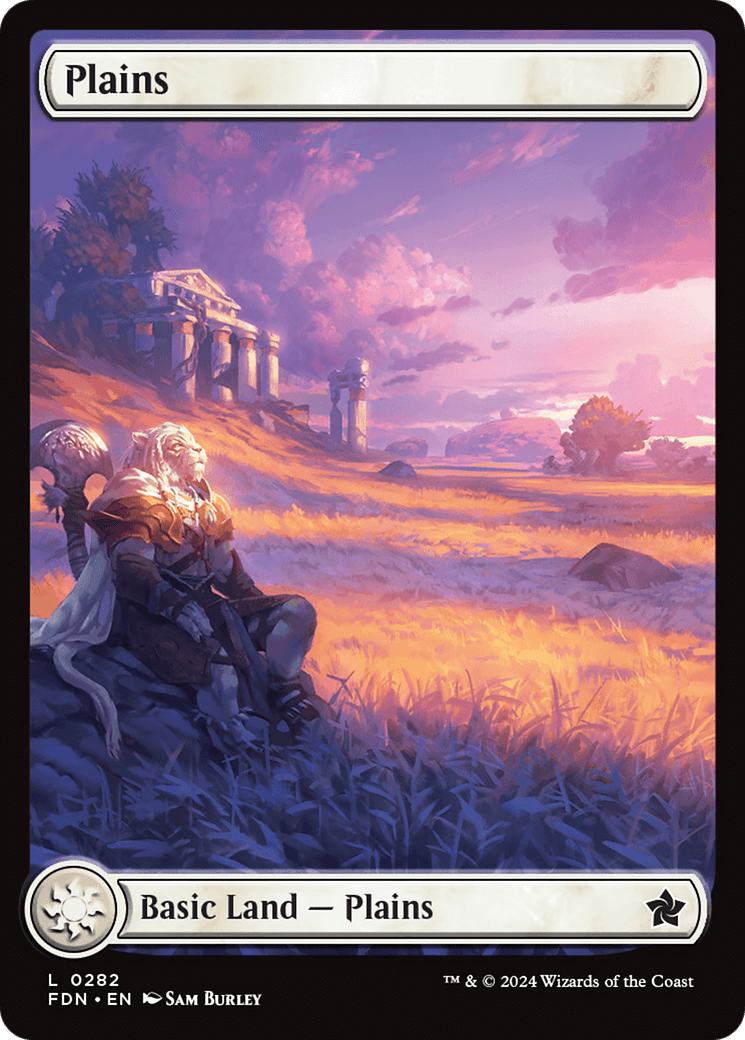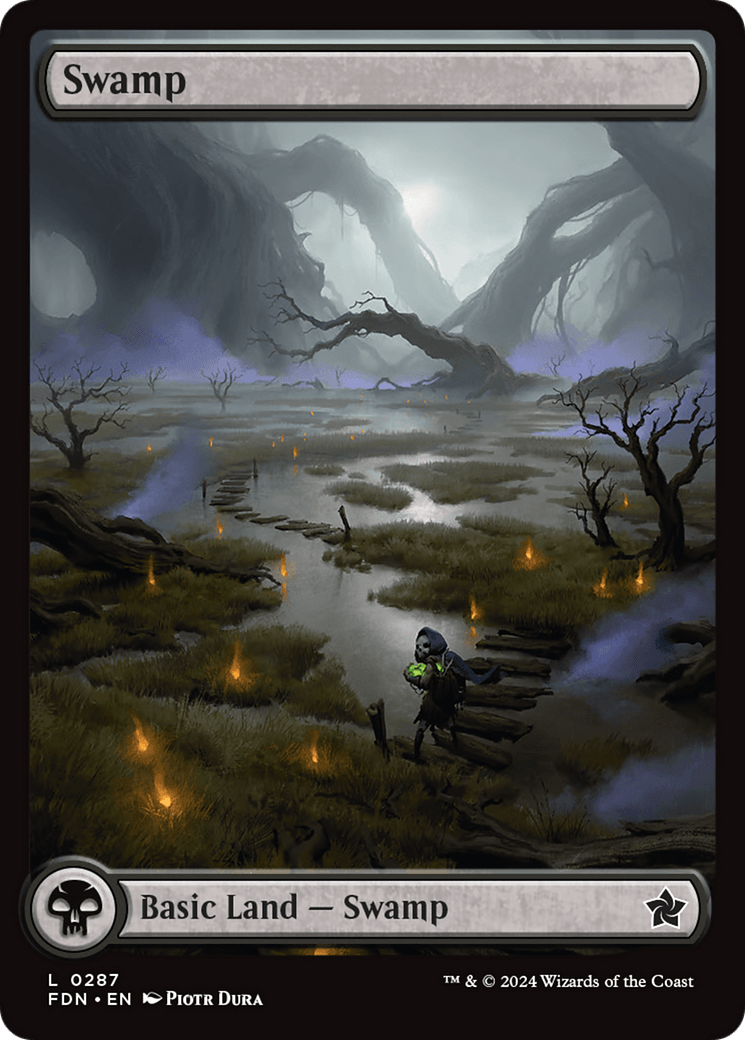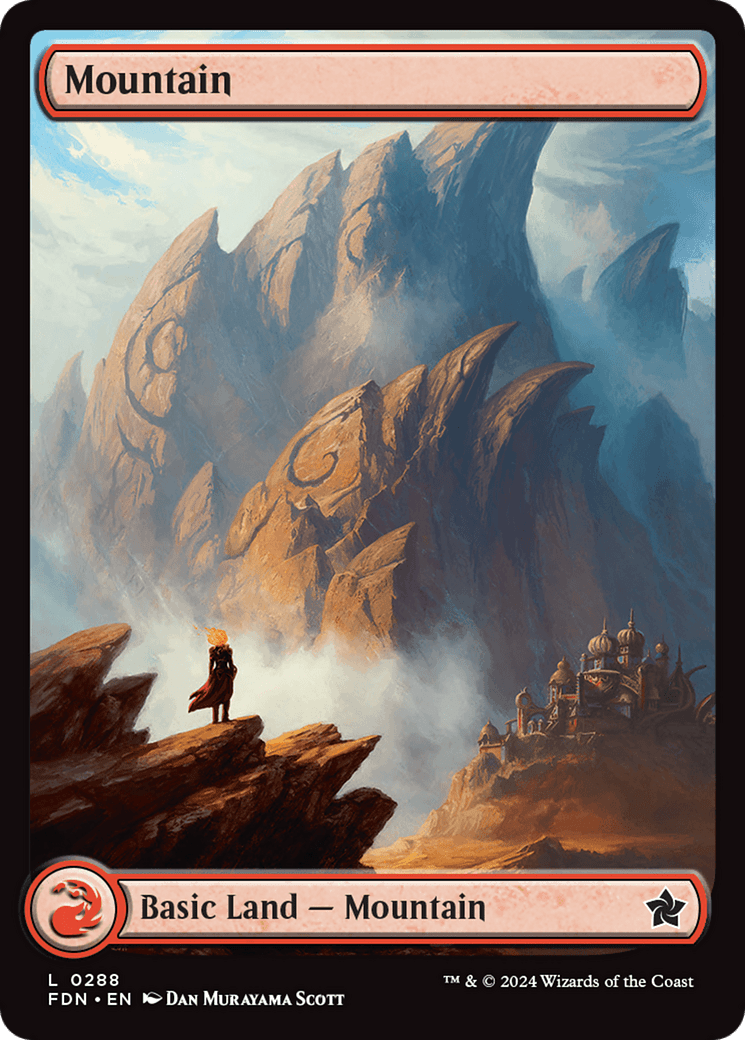Magic the Gathering: Foundations is here, and as someone who was immensely hyped for this set, I am not disappointed. They delivered to the best possible degree in pretty much all facets. Despite being a Core set and not really having a “theme” per say, the theme is, well, Magic to it’s foundation. There are a bunch of cool new cards and a ton of reprints from all different eras of Magic. The lands are illustrated by John Avon and Rebecca Guay. This set is everything Magic is about.
But between the main set and the Starter Set, there are a LOT of cards to talk about and various applications to talk about them in. That’s why for this set, we’re changing up how we do this piece a bit. Darren, AKA ServoToken, is going to be handling both the new cards and the reprints that are new to Pioneer, while I’ll be talking about all of the reprints that were already Pioneer legal, focusing on them from the perspective of Standard.
Changing up the formula
I have the cards divided up into a few categories, with one being cards that are in Standard right now, cards that just rotated out last year, and cards we haven’t seen in Standard in two years or more. These categories are for two reasons. For one, it makes the lists easier to keep track of, instead of just being a big pile of cards. But the other reason is based on power level. For the cards in Standard or the ones that just rotated, we sort of know where they’ve stood the last few years. We know about Tolarian Terror, Demolition Field, and Obliterating Bolt in terms of how strong they are right now. We know a similar thing for the cards that just recently rotated, but we don’t really know how good some of the cards that we haven’t seen in years are. A lot has changed in terms of the power level of Magic and some cards that were Standard all stars in their day might not get their chance right away. But in the five year span of Foundations, some of these cards could get some play at some point.
And because of those categories, instead of doing a Top 10, I’m going to do a Tier List for each of these categories. Here is a brief explanation of the Tiers you’ll see for the first two categories. The third category will have its own list.
Format Glue would be cards that I’m confident will see consistent main deck play for their entire Standard tenures in this set.
Sideboard Staples are similar to Format Glue, but instead of seeing play in the main, they will be in a ton of sideboards for their entire tenure.
Neat Card to Have for Five Years includes cards that might not always be good in a given standard, but will be relevant for a lot of different formats.
If All Else Fails includes the cards that are always going to be fringe playable. There may be better versions of these cards printed at times that phase some of these cards out, but they provide a baseline level card for players to have access to.
Already in Standard Reprints
Format Glue:
I felt like for this group of cards, there wasn’t really an all star, but I do feel that these four cards will pretty much always see play. Demolition Field and Bushwhack are both pretty unique cards that I would be surprised if they could find ways to power creep over the next five years. Not every single deck will want access to these cards, but the ones that do will be very happy about it, and they cater to several different archetypes.
Negate might seem like a weird one to include here, as it should be a lock for Sideboard Staple. But Negate gets mainboarded a lot in Standard, and even Pioneer. Even if it is just a copy or two that sneaks its way into the 60, that still bumps it up from sideboard territory. It is also a card that helps out multiple archetypes as well.
Sideboard Staple:
All of these cards are the definition of Sideboard Staples. Duress and Abrade have seen some mainboard play, but not to the level that Negate does, so I’m choosing to keep them here. Soul-Guide Lantern is often the graveyard hate artifact of choice, while Essence Scatter, Sorcerous Spyglass, and Elspeth’s Smite won’t be in every sideboard, but they will certainly be in enough after five years.
Neat to have for five years:
Since we’ve had all of these cards in Standard, we know where they stand in terms of current power level. Micromancer is the most interesting one here because it’s the one with the highest ceiling, but also the lowest floor. Resolute Reinforcements, Balmor, Ruby, and Tolarian Terror are all key pieces in specific decks right now and I would expect that to remain true going forward. Chart a Course is relevant when tempo decks are good, and I imagine it shows up prominently at some point in five years.
If All Else Fails:
While none of these cards are amazing on their own, there are very likely to be points in Standard over the next five years where each of these could see play because they are quite simply the only cards that do the thing they do, but there is also a lot of room for overheard where there will often be better ways to do the things these do. I still felt like these were all worth mentioning because you may end up wanting to use them at some point.
Cards that Just Rotated
Format Glue:
I know Cavern of Souls will be around for a while, but I think these two cards co-exist quite nicely, as a lot of the decks that play Cavern of Souls could be interested in copies 5-8. Plus, after Cavern rotates, Courtyard will take the place as the only card that does this and it is good at it. Typal strategies are popular and any card that helps smooth out mana for typal decks is appreciated.
Sideboard Staples:
Witness Protection is the most exciting card on this list in terms of play, but Cathar Commando and Valorous Stance both saw some amount of play the last time they were in Standard, with Commando even sliding into the main deck on occasion thanks to its creature type.
Neat Cards to have for five years:
We’ve learned from other formats that Undying Malice can be broken in the right environment, and while Standard shouldn’t be a format where that happens, over the five years that this card will be here, I wouldn’t be surprised if it saw play once. That’s similar to Inspiring Overseer, especially because both Angels and Lifegain are strong themes with other cards in this set, meaning it will have support for all five years.
If All Else Fails:
Both of these are the definition of fringe, as Offer serves as a bad form of combo protection, while Hero’s Downfall gives players some baseline on a murder variant. They could both pop up but there will almost certainly be better things.
PIONEER LEGAL REPRINTS
Format All-Stars:
These two cards are going to be dominant forces for their entire time in Standard and that is effectively a guarantee. Both Llanowar Elves and Boros Charm are multi-format staples and despite being older cards, their power still holds up. You will see these plenty and often during their five years in Standard.
Format Staples:
Opt is similar to Elves and Charm in that it will see play for basically its entire time, but they have already sort of power crept it once by printing Consider and Opt doesn’t have the raw power that Elves and Charm have. But Opt was a big missing piece from this last Standard and it is pretty much always going to be good. It is only a tier down from Charm and Elves because of raw power level.
Sideboard Staples:
Devout Decree and Feed the Swarm are the two I’m most confident in here. There are a lot of enchantments that you want to get rid of and Feed is Black’s best way to do that. On the flip side, Black has been the most played color in Standard for what feels like five years, so Devout Decree will be a welcome addition to help deal with that. Reclamation Sage and Mortify will both have their place and will likely show up in the sideboard across their tenures in Standard.
Specific Archetype Glue:
I grouped these cards on the tier list by the archetype they help support. Pyromancer, Lavarunner, and Fanatical Firebrand combine to give red aggro an incredible base, especially when you add in other cards in the set like Burst Lighting and Boltwave. Ajani’s Pridemate, Healer’s Hawk, Angel of Vitality, and Leonin Vanguard are all part of the creature-lifegain archetype, which actually has been relevant in Standard for a few months, because of the Bats synergy. I’m not sure any of these cards fit into the Bats strategy, but it’s worth pointing out that lifegain hasn’t been nothing lately.
Diregraf Ghoul, Dwynen’s Elite, and Youthful Valkyrie all serve as good pieces for their specific creatures types, and Gate Colossus, Azorius Guildgate, and Circuitous Route bring Gates back to Standard, along with Maze’s End, which is also in the set. Gates is missing a lot of the cards to help make it relevant but it’s still pretty fun that they’re all here.
Neat to have for five years:
This is a grouping of cards that are all flawed, but unique and that gives them a leg up over putting them in the bottom tier. If a deck really wants Fierce Empath, for example, there is only one Fierce Empath. It isn’t a better or worse version of an already existing card, it is just Fierce Empath. And over the course of five years, unique is an upside. Another example is Dragon Fodder, which is a strong contender to show up right away in the Convoke decks that are still around Standard.
I Personally Want This Card to Be Good:
These are all just cards I like. I know we’ve had Burglar Rat variants over the years but Guilds of Ravnica was the set where I started playing Magic so I am very partial to it specifically. Empyrean Eagle features two of my favorite creature types and is a card i have played in Pioneer in UW Spirits. Dryad Militant is a good one drop for aggressive W or G decks and on of my favorite cards in this set is Anthem of Champions, and those two cards will go well together.
Brineborn Cutthroat, Spectral Sailor, and Dive Down are very near and dear to me though, as the 2018 Mono U Tempo deck was the first Standard deck I ever played and helped shape who I am as a player. These three cards provide a strong foundation for a similar deck to exist, although not having a Curious Obsession-esque card will make that harder. It is probably still something I will try though.
If All Else Fails:
As is the case with the first two groups of cards, these are all baseline level cards that will exist and players may turn to them at points. I don’t think any of them are particularly exciting, but they’re here and fill their niche.
—
For as many cards as I covered, I did not even cover all of the reprints. Cards like Burst Lightning are going to be huge players in Standard, but there were so many cards to cover, that splitting them up was the only way that made sense. Similarly, a Top 10 for even this subset of cards just didn’t feel right as there were so many, so the Tier Lists felt like a good way to show off a bunch of cards without just listing them.
I am so excited to play this set. They really did a great job with everything, and even in spite of the impending Universes Beyond stuff, this set really is a love letter to everything that has made Magic great for the last 30 years and giving this base of cards to Standard for an extended period I think will prove to be a well received decision.
—
My favorite card:
The full-art basic lands in this set are gorgeous. All 10 of them are great, but the ones that stick out to me are the ones with Planeswalkers on them. While Kaito and Viven are both newer walkers, the Ajani Plains, the Chandra Mountain and the Liliana Swamp are absolutely incredible. We’ve gotten a lot of great basic lands over the years but these ones are absolutely next level. I’m glad they decided to showcase some of their most popular characters in this way


















